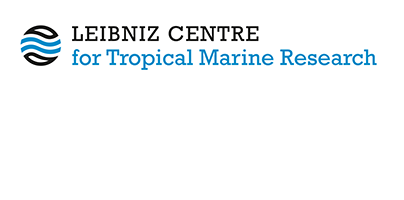Effects of low-level electric current on the growth of Amphistegina lobifera and its photosynthetic diatom endosymbionts.
Rebecchi, Federica  ORCID: https://orcid.org/0000-0003-4762-9263, Lattanzi, Davide, Abramovich, Sigal, Ambrogini, Patrizia, Frontalini, Fabrizio and Schmidt, Christiane
ORCID: https://orcid.org/0000-0003-4762-9263, Lattanzi, Davide, Abramovich, Sigal, Ambrogini, Patrizia, Frontalini, Fabrizio and Schmidt, Christiane  ORCID: https://orcid.org/0000-0001-8461-3485
(2025)
Effects of low-level electric current on the growth of Amphistegina lobifera and its photosynthetic diatom endosymbionts.
PeerJ, 13
.
e20160.
DOI https://doi.org/10.7717/peerj.20160.
ORCID: https://orcid.org/0000-0001-8461-3485
(2025)
Effects of low-level electric current on the growth of Amphistegina lobifera and its photosynthetic diatom endosymbionts.
PeerJ, 13
.
e20160.
DOI https://doi.org/10.7717/peerj.20160.
|
Text
Rebecchi.pdf - Published Version Available under License Creative Commons: Attribution 4.0. Download (1MB) |
Abstract
Larger benthic foraminifera (LBF) are key carbonate producers and significantly contribute to carbonate reef sediments. As the ongoing climate change threatens the calcification capacity of many marine organisms, novel approaches are being explored to support reef resilience. Among these, low-voltage electric stimulation has shown promise in enhancing calcification in corals and other marine calcifiers by stimulating electrodeposition of calcium carbonate. However, the potential of this technique to support calcification in LBF has not yet been assessed. To close this gap, the present study investigates the effects of low electric current densities on the LBF species Amphistegina lobifera. To avoid inducing mortality, the current densities were carefully selected based on previous findings and were applied in two 30-day experiments. Pulse-Amplitude Modulation (PAM) fluorometry (Fv:Fm) was used to measure the photosynthetic efficiency of the diatom endosymbionts, and total pigment content (Chl a) was analysed via a plate reader to assess pigment changes due to the electric stimulation. Growth was analysed by measuring the maximum diameter and counting the formation of new chambers labelled with the fluorogenic dye calcein. The results of both experiments show that electric stimulation did not affect the maximum quantum yield (Fv:Fm) and Chl a content. Furthermore, all treatments exhibited positive growth, but no significant growth enhancement was observed compared to the controls. The highest growth and chamber formation rate were found at current densities of 1 and 1.43 µA/cm2, which represent the highest growth rates obtained in the experiments, as an additional increase in current density to 2.86 µA/cm2 did not seem to further enhance growth. These results suggest that low electric current can influence foraminiferal growth, and the conditions necessary for a significant enhancement remain to be investigated.
| Document Type: | Article |
|---|---|
| Programme Area: | PA2, PA4 |
| Research affiliation: | Biogeochemistry and Geology > Geoecology & Carbonate Sedimentology |
| Refereed: | Yes |
| Open Access Journal?: | Yes |
| DOI: | https://doi.org/10.7717/peerj.20160 |
| ISSN: | 2167-8359 |
| Date Deposited: | 22 Oct 2025 08:16 |
| Last Modified: | 22 Oct 2025 08:16 |
| URI: | https://cris.leibniz-zmt.de/id/eprint/5828 |
Actions (login required)
 |
View Item |





 Tools
Tools Tools
Tools